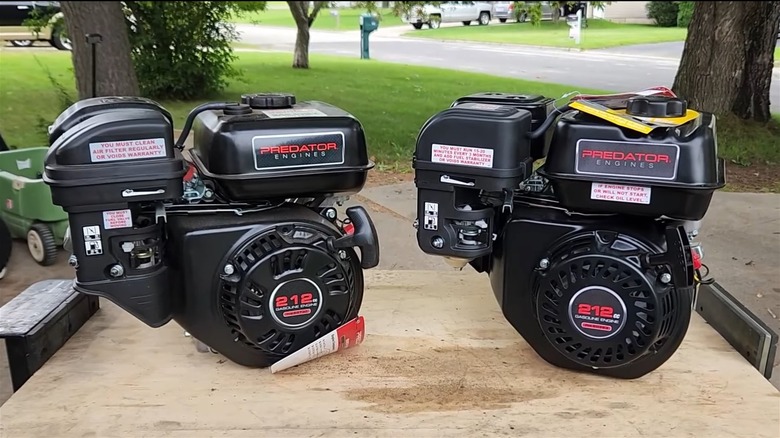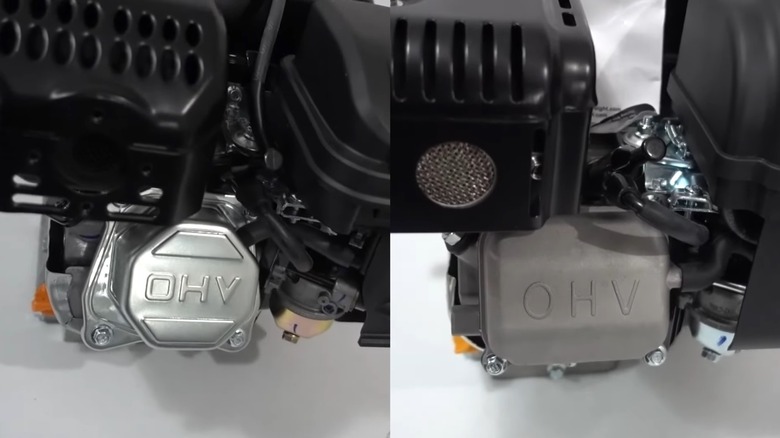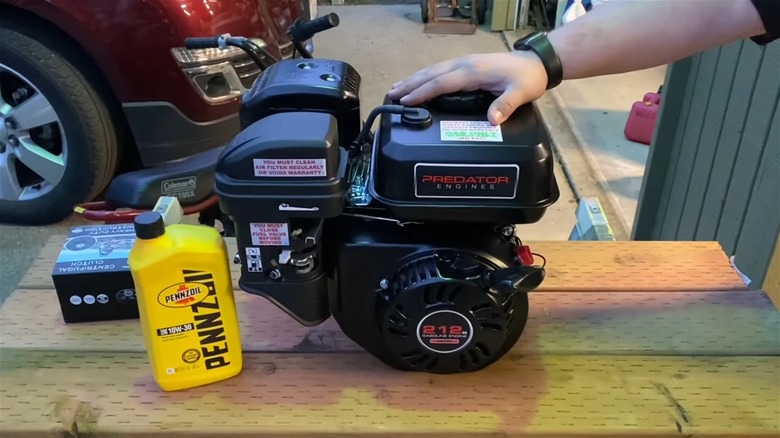Predator 212 Hemi Vs. Non-Hemi Engine: How To Tell The Difference
Water pumps, mini bike builds, and rototillers are just a few examples of where the 212cc Predator engine shines as a major brand of Harbor Freight. According to Forbes.com, Harbor Freight Tools brought in a revenue of $6.5 billion in 2023 and is experiencing rapid growth. The company is making a name for themselves with their popular and versatile small engine products. In fact, there are 13 different small engines Harbor Freight's 212cc Predator can replace.
There are a few variations of this engine that include a Hemi and non-Hemi configuration. Hemi is short for hemispherical engine, which features a distinctly shaped combustion chamber. There are several differences between Hemi and non-Hemi engines, including some performance advantages, which is why it's important to able to identify the 212cc Predator variants. In the past, the model numbers of the 212cc Predator engines indicated whether they were a Hemi or not; however, they no longer differentiate the two models.
Fortunately, you can visually determine whether a 212cc Predator engine is a Hemi by examining the unit. The most striking contrast between the variants can be seen with the cylinder head: The Hemi version is made from another material, isn't the same shape as the non-Hemi, and the hose going into the cylinder head attaches differently.
Valve cover material, shape, and airbox hose attachment
The characteristics of the valve cover on a 212cc Predator engine will give away whether it's a Hemi. First, the non-Hemi features a shiny steel valve cover, whereas the Hemi's valve cover is a dull luster cast aluminum. In addition to the material used and color, you can also spot the Hemi by its shape. While the non-Hemi valve cover forms a recognizable hexagon or six-sided shape, the Hemi looks noticeably more rectangular.
Both engines have a hose going from the valve cover to the airbox. However, the hose attaches to a different spot on the valve covers and features a different connection method. The non-Hemi Predator includes a hole on the valve cover located in the upper right-hand corner where the hose enters. Conversely, the Hemi variant has a cast aluminum connector protruding out of the side of the valve cover on the right that the hose slides over.
You may also be able to tell the engines apart even when they are in their retail boxes. The Hemi box is slightly taller, one image on the box includes the valve cover, and you can also catch a glimpse of the valve cover through the built-in box handles.
Is there really a performance difference between the two?
With all this focus on identifying the 212cc Predator Hemi, does the hemispherical model make a noticeable impact on performance? Not really, which is likely why both versions of the 212cc Predator are sold interchangeably. The official figures provided by Harbor Freight list both engines at 6.5 horsepower and a peak torque of 8.1 lb-ft at 2500 RPM.
Unofficially, one test with the two Predator variants on a dyno showed slightly different output. The non-Hemi registered 6.3 horsepower and the Hemi was a bit higher at 6.7 horsepower. Of course, dyno results can vary based on testing conditions, so these numbers aren't definitive.
Some owners of both versions of the 212cc Predator have expressed their personal findings and opinions. One poster explained that they were "Equally happy with both," but did mention that the Hemi includes a taller fuel tank which can cause challenges when fitting it to certain frames. But another owner stated, "If big mods are planned, then I would say the Hemi is actually worse. Rocker pedestals are fixed in place and it uses some short little valve springs." Regardless of which version you purchase, the Predator 212cc engine can power several different Harbor Freight tools in your garage among many other applications.


